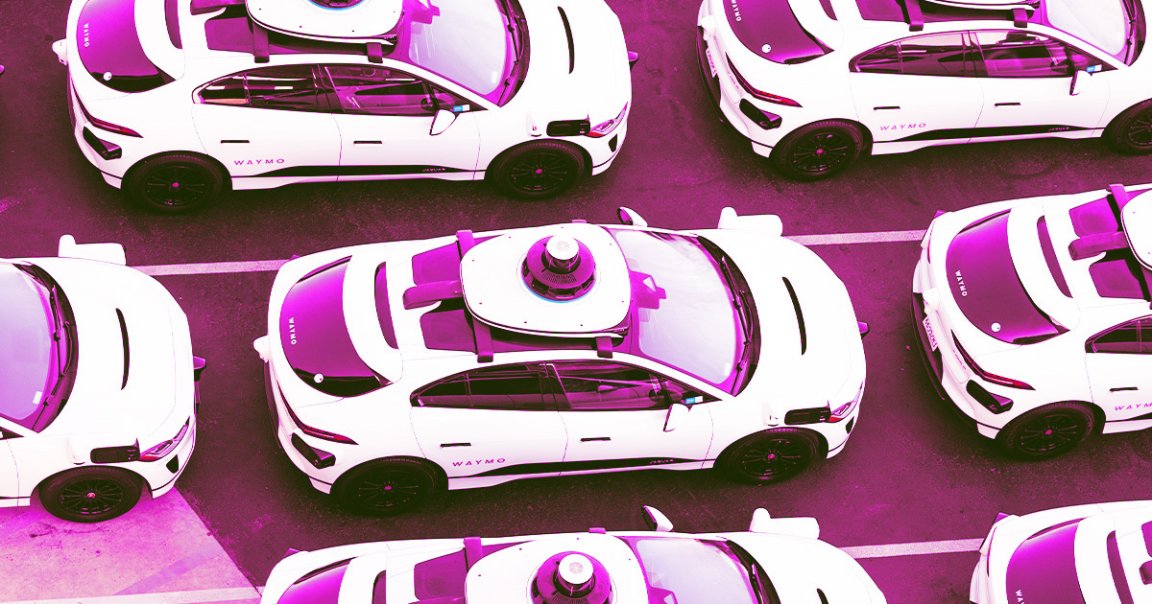
Waymore Revenue
As its competitors falter, the Google-owned and California-based robotaxi service Waymo seems to be in cruise control.
According to figures the company shared in August, Waymo is now giving over 100,000 paid rides to customers each week in San Francisco, Phoenix, and Los Angeles, using its fleet of fully autonomous and specially-equipped Jaguar SUVs. That’s double the number of weekly rides it was giving in May, a clear sign of its growing dominance in this burgeoning market.
“At this point, the fully autonomous driving industry is really just an industry of one: Waymo,” former CEO John Krafcik, who is now a board member at the EV automaker Rivian, told The New York Times.
But as the newspaper notes, there’s a major caveat: despite its healthy stream of customers, Waymo still isn’t profitable. Google’s experimental division, which includes Waymo, had an operating loss of around $2 billion in the first of this year, and the robotaxi company is most likely a significant portion of that loss, Mark Mahaney at investment research firm Evercore ISI told the NYT.
With even the industry leader still in the red, it’s a sobering reminder that the road to profitability is a long one, with no guarantee that it won’t lead to a dead end.
Highway Robbery
Granted, these kinds of losses come with the territory. To make stupid amounts of money, you’ve got to spend stupid amounts of money.
Nevertheless, the NYT lays out a key disadvantage for Waymo. Unlike the rideshare companies it will be competing against, Uber and Lyft — with whom it charges similar prices per ride — Waymo needs to provide its own vehicles. And self-driving Jaguars aren’t cheap, costing as much as $100,000 a pop, according to the NYT, citing remarks made by a Waymo executive in a podcast.
Though its safety track record is very good, Waymo will also have to contend with a general hesitancy towards self-driving technology. To safely operate its vehicles, Waymo meticulously creates detailed maps of each city, so expanding to new ones will require considerable research, time and money.
Case in point: not long before Waymo announced a huge expansion across California, Google said it was reinvesting $5 billion into the company. A show of faith, sure, but a sign of the serious expenses that an expansion entails.
Down the Road
The long and short of it is that everything costs a lot. Luckily, Waymo has managed to avoid the costliest blunder of them all in this biz, which is a major crash turned PR disaster — unlike its competitor Cruise, owned by General Motors, which briefly flamed out of the business after regulators began investigating its robotaxis for endangering pedestrians.
Waymo’s chief product officer Saswat Panigrahi told the NYT that the company hopes that some of its fixed costs will decrease over time, and that the roll-out of its sixth generation of robotaxis, which are made by Chinese EV automaker Zeekr to replace the Jags, will mean “the profitability will jump further” — eventually.
Waymo will also need to be shrewd about what markets it targets. Potentially ripe for the picking, the NYT notes, are areas that have a shortage of Uber-slash-Lyft drivers, or cities with poor public transportation.
Those markets could help rake in money in the future. But for now, the robotaxi industry is at a crossroads.
More on Waymo: Confused Robotaxis Gather in Droves to Honk at Each Other All Night